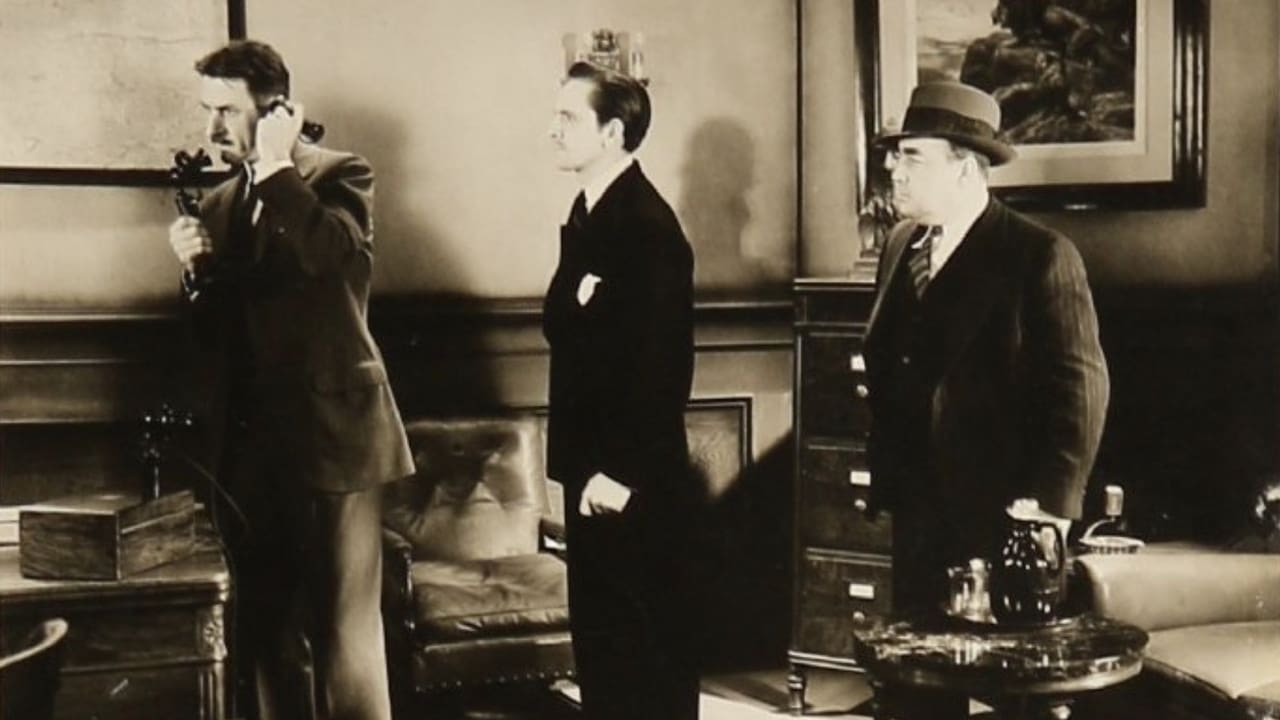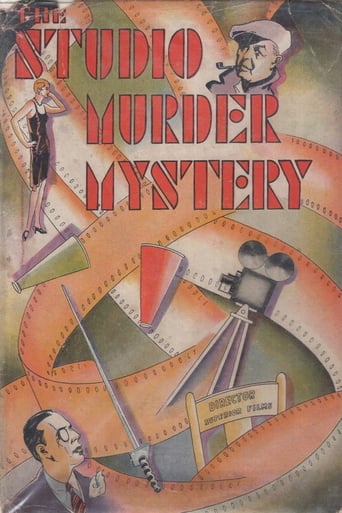

It's easy to rip apart films like "The Studio Murder Mystery". After all, the sound isn't very good, the sound effects are pretty crappy, there's no incidental music and the acting is occasionally a bit stilted. However, you need to cut the film a bit of slack because all these problems are true of just about every film from 1929! After all, sound was a new thing for films and learning to effectively use it was still being worked out properly. For example, they still didn't know how to add music to films other than having an orchestra just out of camera range playing the music as they filmed it! And, often actors tended to stay in small areas because microphones had difficulty picking up folks otherwise! So, be prepared...it's going to be tough going with this picture.The picture itself is only fair even if you excuse its technical shortcomings. The murder victim is VERY easy to determine and all the stuff in between this and the capture of the killer is pretty dull. There are only two unusual things about the film. One is that a character is convicted of the murder and sent to prison...and the real killer is only discovered later. Another is that the cast is really interesting--with Warner Oland (who also played Charlie Chan throughout the 1930s), Neil Hamilton (quite the matinée idol in his day) and a very young Frederic March. Apart from that, it's slow going and clichéd.Normally, I'd give this one a 2 but due to the date in which it was made, I'll kick in another point due to the shabby production values of ALL 1929 flicks!
... View MoreBy 1929 a lot of the public were getting sick of talking pictures that seemed to do nothing but talk! But a year bought big changes and the difference between "The Studio Murder Mystery", a static, no action talkie made in June and "Darkened Rooms", an interesting movie about spiritualism made in November was immense. Neil Hamilton, interestingly, was in both and far less annoying in the latter.This must have been the prototype for all those murder mysteries set in film studios, featuring annoying heroes that seem to know more than the police (I'm thinking of 1932s "The Death Kiss"). Neil Hamilton, in 1929, was to Paramount what Conrad Nagel was to MGM, played irritating gag writer Tony White and definitely made you wish that he had been "bumped off" instead of Richard Hardell!! It did get a glowing, big star review from "Photoplay", that was because the story was taken from one of the magazine's fictional stories that they occasionally featured.Borka (Warner Oland) regrets giving the part of the hero in his new talkie to Richard Hardell (Fredric March) - he thinks he has no talent!! The role was part of the prize in a New Talent Competition that Hardell, a rich womanizer, has just won. Even though Hardell is married it doesn't stop him playing around with every girl at the studio - including Borka's wife, who dies with Dick's name on her lips. When Dick is found dead it seems everyone at the studio has a motive. There is Dick's wife Blanche, who is fed up with his cheating ways (Florence Eldridge was March's real life wife). Helen MacDonald (Doris Hill) who loves Dick madly but is finally convinced of his wandering ways by his wife, Helen's father and brother who want to protect her and of course Borka. When Helen's father dies from the same poison that Helen had bought for herself (she was going to end it all) and just as he was about to shed light on the killer - things look grim for her.The best thing about the film is the fascinating, behind the scenes look at Paramount. The "film within a film" (with an unbilled Phillips Holmes in the lead as a soldier) was a silent but would have been released with dialogue sequences or syncronization - in 1929 silents were long gone. In "The Studio Murder Mystery" there is a lot of clustering - microphones were still stationary and being hidden in vases and table arrangements. Doris Hill may have been a WAMPAS Baby Star in 1929 but in this movie she was swamped by more talented players - before the year was out she was a definite supporting player in "Darkened Rooms" and by 1930 she was being starred in the genre that every young actress dreads - the Western!!Mischa Auer, who is remembered for his screwball comedy in "My Man Godfrey" had an unbilled bit as an assistant. Lane Chandler, who at one stage was a challenger to Gary Cooper's Western crown had an unbilled bit as Bill Martin. Eugene Palette, who was also in "My Man Godfrey" played Detective Dirk and the butt of White's jokes.Recommended.
... View MoreHowever, I'd say this will probably be of interest to you only if you are into the early talkies or film history. I viewed a very good print of this film, so there are some out there.Richard Hardell (Fredric March) is a man who won a contest and opportunity to star in films, but he seems to be taking that opportunity to make enemies at every turn. His director (Warner Oland) suspects him of having an affair with his wife, Hardell's wife knows he's been unfaithful in the past and is suspicious that old habits die hard, and Hardell is actually having an affair with a young ingénue, Helen MacDonald, who finds out she's just one in a string of many girls on the side after Hardell has sworn his undying love. Finally, there is Helen's brother who knows about Hardell's wicked ways and how he is using his sister.Hardell is found dead on the set, a knife sticking out of his chest, and the question is, of course, who among the many who had motives and opportunity actually did it. Others have called this slowly paced, but I thought it moved along briskly with good performances by all. You can figure the mystery out yourself if you pay close attention to what is going on and differentiate what you know you saw versus what most people could assume they saw leading up to the murder.The best part of this film is getting a good look at the Paramount sound stages as there are some scenes in the film that actually show an early sound film shooting in progress. One key scene is definitely a shot of a silent film in progress, another has a sound film being shot complete with the old camera booths from the early sound era. The film itself has one foot in talkies and the other in silents as the scenes in which there is conversation are completely static - courtesy of sound technology of the time. You can also clearly see that the scenes in which the camera shows any movement are silent with some sound dubbed over them. This was a common technique in 1928 and 1929 as there was no other way to include action scenes in the Vitaphone era.I'd say the one distraction in this film is Neil Hamilton, who plays struggling studio gag writer Tony White who loves tragic figure Helen MacDonald from afar. I thought he was quite good when he played more serious dramatic roles, but here he's given the smirking wise cracking style of Lee Tracy and it just doesn't suit him.
... View MoreI LOVE old mysteries, but this early sound film is a real "creaker". The action is snail-paced, and the early sound recording makes it difficult to understand what most of the actors are saying. All-in-all, a confusing film.
... View More